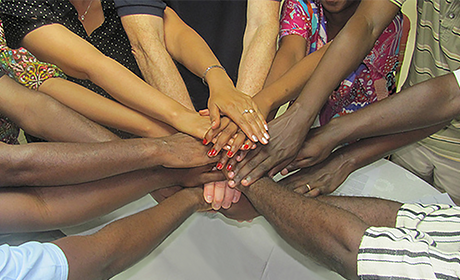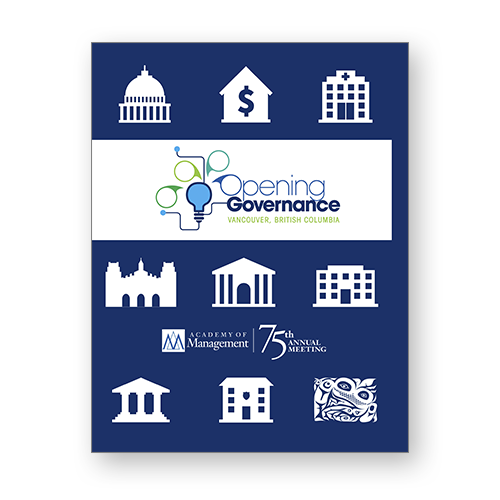Banner Instructions
- Choose one banner at a time: "Selected banners"
- Under "Single Item Settings" choose the appropriate widget template
- Disable metatitle information by going to: Advanced > metadataFields > SEOEnabled and set to False
- Turn off widget paging by going to: Advanced > Model > UrlKeyPrefix and set value to banner (this solves the issue of the banner changing to a list when clicking on other content type's pagination)
Cards

Card
Lorem ipsum dolor sit amet, consectetur adipiscing elit, sed do eiusmod tempor incididunt ut labore et dolore magna aliqua.

Card
Lorem ipsum dolor sit amet, consectetur adipiscing elit, sed do eiusmod tempor incididunt ut labore et dolore magna aliqua.
Card
Lorem ipsum dolor sit amet, consectetur adipiscing elit, sed do eiusmod tempor incididunt ut labore et dolore magna aliqua.

Card Left Image
Lorem ipsum dolor sit amet, consectetur adipiscing elit, sed do eiusmod tempor incididunt ut labore et dolore magna aliqua. Ut enim ad minim veniam, quis nostrud exercitation. Ut enim ad minim veniam, quis nostrud exercitation.

Testimonials
Testimonial Name
Lorem ipsum dolor sit amet, consectetur adipiscing elit, sed do eiusmod tempor incididunt ut labore et dolore magna aliqua. Ut enim ad minim veniam, quis nostrud exercitation. Ut enim ad minim veniam, quis nostrud exercitation.

Card Right Image
Lorem ipsum dolor sit amet, consectetur adipiscing elit, sed do eiusmod tempor incididunt ut labore et dolore magna aliqua. Ut enim ad minim veniam, quis nostrud exercitation.
Alternate Cards

Alternate Card
Lorem ipsum dolor sit amet, consectetur adipiscing elit, sed do eiusmod tempor incididunt ut labore et dolore magna aliqua.

Alternate Card
Lorem ipsum dolor sit amet, consectetur adipiscing elit, sed do eiusmod tempor incididunt ut labore et dolore magna aliqua.
Alternate Card No Image Selected
Lorem ipsum dolor sit amet, consectetur adipiscing elit, sed do eiusmod tempor incididunt ut labore et dolore magna aliqua.
Expanding Summary Cards
Expanding Summary Cards
Expanding Titles Cards

Academy Blue Center
Lorem ipsum dolor sit amet, consectetur adipiscing elit, sed do eiusmod tempor incididunt ut labore et dolore magna aliqua. Ut enim ad minim veniam, quis nostrud exercitation. Ut enim ad minim veniam, quis nostrud exercitation.

Alternate
Lorem ipsum dolor sit amet, consectetur adipiscing elit, sed do eiusmod tempor incididunt ut labore et dolore magna aliqua. Ut enim ad minim veniam, quis nostrud exercitation. Ut enim ad minim veniam, quis nostrud exercitation.
Background
Lorem ipsum dolor sit amet, consectetur adipiscing elit, sed do eiusmod tempor incididunt ut labore et dolore magna aliqua. Ut enim ad minim veniam, quis nostrud exercitation. Ut enim ad minim veniam, quis nostrud exercitation.

Card
Lorem ipsum dolor sit amet, consectetur adipiscing elit, sed do eiusmod tempor incididunt ut labore et dolore magna aliqua. Ut enim ad minim veniam, quis nostrud exercitation. Ut enim ad minim veniam, quis nostrud exercitation.
Full Row Left
Lorem ipsum dolor sit amet, consectetur adipiscing elit, sed do eiusmod tempor incididunt ut labore et dolore magna aliqua. Ut enim ad minim veniam, quis nostrud exercitation. Ut enim ad minim veniam, quis nostrud exercitation.
ButtonFull Row Right
Lorem ipsum dolor sit amet, consectetur adipiscing elit, sed do eiusmod tempor incididunt ut labore et dolore magna aliqua. Ut enim ad minim veniam, quis nostrud exercitation. Ut enim ad minim veniam, quis nostrud exercitation.
ButtonCarousel
Carousel Title
Lorem ipsum dolor sit amet, consectetur adipiscing elit, sed do eiusmod tempor incididunt ut labore et dolore magna aliqua. Ut enim ad minim veniam, quis nostrud exercitation ullamco laboris nisi ut aliquip ex ea commodo consequat. Duis aute irure dolor in reprehenderit in voluptate velit esse cillum dolore eu fugiat nulla pariatur. Excepteur sint occaecat cupidatat non proident, sunt in culpa qui officia deserunt mollit anim id est laborum.

Another Carousel Title
Lorem ipsum dolor sit amet, consectetur adipiscing elit, sed do eiusmod tempor incididunt ut labore et dolore magna aliqua. Ut enim ad minim veniam, quis nostrud exercitation ullamco laboris nisi ut aliquip ex ea commodo consequat. Duis aute irure dolor in reprehenderit in voluptate velit esse cillum dolore eu fugiat nulla pariatur.

Big Data and Managing in a Digital Economy
18-20 April 2018
Location: Surrey, UK

From Start-up to Scale-up: Coping with Organizational Challenges in a Volatile Business Environment

The World’s First Trillionaires and More AI Predictions

Finding an Emotional Comfort Zone in Intense Jobs

Affiliated and Associated Societies
AOM builds cooperative relationships and networks with other societies committed to advancing the scholarship and practice of management. Affiliated and Associated Societies augment and complement the activities of AOM. Both operate autonomously and provides you the opportunity to interact with colleagues who share commonality of culture, language, or geographic location.
Explore AOM's Affiliated and Associated Societies

Connect@AOM
With AOM members living all around the world, connecting with others online is essential. Connect@AOM offers members and non-members a platform with more than 50 communities to connect through discussion boards, a library of shared documents, and a calendar of events to become involved in conversation and collaboration with colleagues.
Connecting in Person at AOM Events
Networking at events is a crucial part of growing your connections. AOM holds multiple events each year around the world, ranging from our Specialized Conferences to our Annual Meeting. Through connecting with others at AOM events, you will learn about the latest research, meet others inside and outside of your management discipline, and expand your network, knowledge, and skills.
Explore AOM Events

Divisions and Interest Groups
Divisions and Interest Groups (DIGs) reflect a broad range of member interests within 26 management disciplines. By joining a DIG, you can network with colleagues with similar scholarly and professional interests. Each DIG offers a range of services, including educational sessions, social events at the Annual Meeting, and DIG websites and Connect@AOM communities for sharing professional development opportunities, recognition programs, and division updates.
Explore AOM's DIGs

Social Media
Connect with AOM and those interested in management to expand your network and stay informed about news and events through our social media pages on Twitter, Facebook, LinkedIn, Flickr, and YouTube.
Explore AOM's Social Media

Volunteering
As an AOM volunteer, you are invited to create the collective future of the organization by joining in the planning, direction and decision making of AOM. Volunteering connects you with others who have similar interests, which serves to expand your network.
Volunteer with AOM

Test of the Research title

Research hero test 2

Responsible Leadership in Rising Economies
23-25 October 2019
Location: Bled, Slovenia

Shiko Ben-Menahem
Senior Lecturer and Chair of Strategic Management and Innovation, ETH Zurich
Member since 2011
"The Specialized Conference Initiative… is a great initiative because it's a smaller-sized conference, which helps to off-set the scale that can be kind of daunting of the Academy of Management Annual Meeting and really give people the opportunity to interact on small-scale, more intimate settings which provides certain benefits that you wouldn't have in large conferences."

Uriel Stettner
Assistant Professor, Tel Aviv University
Member since 2009
"The specialized conference initiative of the Academy of Management is an alternative approach to creating high-quality conferences. What is different about the initiative is that it is targeted at smaller audiences that are more targeted with specific teams. They take place in smaller venues and provides the opportunity for more in-depth, one-on-one meetings and discussions around a specific field or subject area."

Herman Aguinis
Avram Tucker Distinguished Scholar; Professor of Management; Chairperson, Department of Management, George Washington University
Member since 1992
"I am obviously very involved with AOM given my current role as AOM Vice President and Program Chair and my upcoming roles as AOM President-elect and then AOM President. In fact, I am a member of 11 AOM Divisions! Why? AOM has been extremely generous to me and I have benefited so much from my AOM membership. I have made life-long friends and research partners, recruited colleagues, and have been recruited by other universities myself—all of this through AOM. So, from personal and professional points of view, AOM is the place to be."

John Ballard
Emeritus Professor of Management, Mount St. Joseph University, Cincinnati, Ohio
Member since 1986
"AOM has been by far my most important professional organization. Why? The networking, the opportunities, the annual meeting, the peer recognition for service. Find the divisions where you feel at home and then get involved. AOM has 'upped my game'—teaching, research, consulting—throughout my career."

Shiko Ben-Menahem
Senior Lecturer and Chair of Strategic Management and Innovation, ETH Zurich
Member since 2011
"The Specialized Conference Initiative… is a great initiative because it's a smaller sized conference which helps to off-set the scale that can be kind of daunting of the Academy of Management Annual Meeting and really give people the opportunity to interact on a small-scale, more intimate settings which provides certain benefits that you wouldn't have in large conferences."

Gaurab Bhardwaj
Associate Professor, Babson College
Member since 1993
“AOM Insights brought our paper to the attention of a wide audience. It led to many downloads and I am optimistic about the paper’s long-term impact. AOM Insights has been invaluable.”

James Calvin
Professor of Management and Organization, Johns Hopkins University
Member since 1998
“What makes the Academy of Management different for me than other organizations is that over the years, I’ve had the opportunity, both at the conferences and between conferences, to carry on important dialogues, [and] to build relationships. It’s been very instrumental for my career development, and I’ve also had the chance to mentor others in the field of management.”

James Calvin
Professor of Management and Organization, Johns Hopkins University
Member since 1998
“The greatest value of being an Academy member is as follows: you have a chance to do research, find research partnerships, engage thinkers, leaders in the field, and contribute to the field of management as theory, science, and practice.”

Center for Plain Language
“Managers can find a treasure trove here. AOM Insights understands what interests managers and how busy they are. The site is easy to navigate... [and] offers some fantastic infographics.”

Matthew Cronin
Associate Professor of Management and Dean's Scholar
Member since 2000
"AOM represents one of the greatest things about this career—the community. Though the membership is huge and that may seem daunting, I still have the friends I met at my first Annual Meeting 30 years ago. These people and the many others I have met since have become the people I go to for both professional and personal fulfillment."

Stephen Cummings
Director of the Atom Innovation Space, School of Management, Victoria University of Wellington
Member since 2015
“Working with the Insights team helped us promote the key findings of our research in a form that people from all walks could relate to, helping our work to reach a bigger audience and have a much greater impact on management practice.”

Elizabeth George
Professor of Management, University of Auckland
Member since 1992
"I value my membership in the Academy of Management because of all the friends I have made through AOM over the years, and all the interesting ideas I have read and heard from the Academy meetings and publications."

Elizabeth George
Professor of Management, University of Auckland
Member since 1992
"I value my membership in the Academy of Management because of all the friends I have made through AOM over the years, and all the interesting ideas I have read and heard from the Academy meetings and publications."

Amy Hillman
Dean and Charles J. Robel Dean’s Chair W. P. Carey School of Business at Arizona State University
Member since 1992
"AOM has really made my career. I’ve met co-authors from all over the world as a result of the Annual Meeting. I’ve had publication opportunities across the family of AOM journals. I’ve had opportunities to develop other authors’ work and in doing so, make me a stronger researcher. Probably most importantly, it’s built a community I feel a part of and where I can turn for advice, friendship and scholarly debate."

Morten Huse
Professor, Department of Communication and Culture, BI Norwegian Business School
Member since 1990
"The annual meetings of the AOM is the largest international meeting place for management scholars. I am from Norway, and I have been a member of AOM for more than thirty years. I have experienced several highlights from the AOM membership, including that of getting friends, meeting many devoted scholars at the meetings, and the direct access to the AOM journals."

Morten Huse
Professor, Department of Communication and Culture, BI Norwegian Business School
Member since 1990
"AOM is globally the most influential professional association for management scholars. AOM has been a trendsetter for management research.... My AOM participation introduced me to devoted scholars with high experience in publishing in the premiere journals in our field. This gave me as a junior scholar advantages compared to my peers from Norway and many other European countries.... As scholars we do not only have a responsibility to ourselves. It is important that we nurture true scholarly values, and contribute both to the larger academic community as well as to the world around us. Being involved on a regular basis in scholarly associations as AOM, helps us see scholarship and the reality beyond what we see at our local universities."

Morten Huse
Professor, Department of Communication and Culture, BI Norwegian Business School
Member since 1990
"I have experienced several highlights from the AOM membership.... The most important is probably that I during the 1990s was invited to contribute to the internationalization of the Academy. Through this work I got to know many of the fantastic leaders of our community. More recently, it is definitely a highlight to be invited to contribute to developing the future of AOM and our scholarly values by being a member of the AOM board of governors. It is a major responsibility for the members of the AOM board of governors to contribute to sustainable and impactful scholarly values."

Morten Huse
Professor, Department of Communication and Culture, BI Norwegian Business School
Member since 1990
"My AOM participation introduced me to devoted scholars with high experience in publishing in the premiere journals in our field. This gave me as a junior scholar advantages compared to my peers from Norway and many other European countries. I have experienced several highlights from the AOM membership, including that of getting friends, meeting many devoted scholars at the meetings, and the direct access to the AOM journals."

Dana Kanze
Assistant Professor of Organisational Behaviour, London Business School
Member since 2016
“With this particular paper, it was important for us to get our findings into the hands of those who stand to benefit. AOM Insights was able to help make this happen by distilling the research into takeaways that are palatable for a wide audience to digest.”

Kevin Kniffin
Assistant Professor, Cornell University
Member since 2010
“To translate our work for broader audiences, AOM Insights has become a first-line broker for helping us tune-in our research for interests that go beyond journal readers. Against the backdrop of talking about impact, the helpful, generous, and skillful team at AOM Insights helps researchers to walk the talk of public engagement in ways that are both efficient and effective.”

Morgan Koski
Cesim
Annual Meeting Sponsor
"We have been exhibiting at the AOM Annual Meeting every year since 2011 and we look forward to many more to come. AOM is very important for developing our brand especially among academics from the US. In addition, during AOM we meet many prospects and clients from other parts of the world for whom it is important to connect with us at the conference. AOM is an integral part of our marketing activities and Megan and her team are fantastic."

Mark Learmonth
Professor of Organisation Studies, Durham University
Member since 2003
“Preparing the Insights summary of our article with people at AOM made us think about the key messages of our article―what were the core things we really wanted to say―in new ways. It also got us an audience of more general readers who would probably never have encountered our work if it had stayed within the confines of an academic article.”

Dirk Lindebaum
Professor to department People, Organizations and Society, Grenoble Ecole de Management
Member since 2014
“Social science matters, and we as social scientists have an obligation to share the fruits of our research with practitioners outside academia. Engaging with AOM Insights enables me to go the extra mile and reach out to practitioners to make a difference. The Insights summaries are concise and high-quality, and tailored to the needs of non-academic audiences. I welcome this platform as a facilitator of ideas and findings between academics and practitioners.”

Sean R. Martin
Associate Professor of Business Administration, Darden School of Business, University of Virginia
Member since 2009
“The team at AOM Insights has been nothing short of phenomenal. I have had the opportunity to discuss my research with them on several occasions and they have always been very conscientious in describing the work and thoughtful when discussing its managerial implications. It’s wonderful to have such a great group working within the Academy of Management to help broadcast excellent articles covering the high-quality research that management scholars are doing. Gratitude and kudos to the AOM Insights team.”

Maverick Publishing Specialists
“Summaries are well-written, clear and engaging, and supported by informative graphics and videos. No other competitor offers the academic depth provided by Insights. Such an approach would be welcomed by busy executives and managers, as well as by students and teachers, who would value the learning experience, as well as access to the scholarly background information.… Insights’ practical approach and links to actionable research lend credibility not otherwise present in the competition.”

Liliana Mendivil
EGADE Business School
AOM Virtual Career Fair Sponsor
"The quick communication (questions/answers in real time), immediate support, the integration of all, getting acquainted with the platform (for many of it was the first time)… it has been a great experience!"
Jay O'Toole
Assistant Professor, Elon Universit
Member since 2007
"The staff and volunteers with the Career Services Center at the Annual AOM meetings were incredible. They treated every question I had with personal attention. They helped me laugh when it was a clear I was anxious and they provided clear and actionable advice when I needed more direct feedback. Simply put, they created a space for me to be myself without feeling judged."

Semin Park
Assistant Professor of Management and Entrepreneurship, Tippie College of Business, University of Iowa
Member since 2013
“If you are joining and attending the Academy for the first time, you might be very overwhelmed, but don’t feel shy. Reach out to people, because they are going to be very welcoming and want to hear about your perspective.”

Semin Park
Assistant Professor of Management and Entrepreneurship, Tippie College of Business, University of Iowa
Member since 2013
“I take advantage of looking at the top journals that the Academy of Management offers, and also as a member it’s easier to reach out to the scholars that you are not able to connect with otherwise."

Timothy G. Pollock
Haslam Chair in Business, Distinguished Professor of Entrepreneurship, University of Tennessee, Knoxville
Member since 1993
“I have been fortunate to have three of my recent articles summarized and promoted through AOM Insights. The Insights team has done a great job of not only faithfully capturing the studies' key ideas and findings, they have also shown great ingenuity in developing interesting hooks to grab the interest of non-academic audiences. I appreciate that they have made efforts to put us in touch with their PR team and promote our work, as well as provide materials helpful in my institution's own promotion efforts. I think AOM Insights has been of great benefit to AOM members by creating a channel through which our research can have greater influence outside of academia.”

Wendy Smith
Professor of Management, Co-director - Women's Leadership Initiative, University of Delaware
Member since 2006
“I've always believed that there is a social life to ideas. We can write our brilliant ideas into great papers, but for ideas to be impactful, people have to read the papers, play with our ideas, write papers, and expand on our insights. AOM Insights helps us to make sure that our ideas are not languishing in a dusty library, but are living and breathing in powerful conversations among our colleagues, and are able to have a greater impact. For us, AOM Insights helped us to take our ideas about paradoxes and paradox mindsets and get more people to engage with and build on these insights.”

Uriel Stettner
Assistant Professor, Tel Aviv University
Member since 2009
“The greatest value of being an AOM member is being apart of this larger collective of individuals, of scholars who try to advance the field of management in general [...] you have easy access to various kinds of knowledge basis that can further not only your own research, but that of your field.”

Uriel Stettner
Assistant Professor, Tel Aviv University
Member since 2009
“The Academy is an important organization in management and, of course, in my field: Strategy, Entrepreneurship, and Innovation. This is really the most central organization to be in and meet colleagues to discuss research, collaborate, and advance the fields all together as a collective.”

Uriel Stettner
Assistant Professor, Tel Aviv University
Member since 2009
"The Specialized Conference Initiative of the Academy of Management is an alternative approach to creating high-quality conferences. What is different about the initiative is that it is targeted at smaller audiences that are more targeted with specific teams. They take place in smaller venues and provides the opportunity for more in-depth, one-on-one meetings and discussions around a specific field or subject area."

Blog Image Top
HuffPost: What Not To Say To Your Black Colleagues Right Now
Originally found at Huffington Post, by Monica Torres
Nationwide demonstrations have been taking place across the U.S. this past week to protest the injustice of yet another Black person killed by police.
George Floyd died after three Minneapolis police officers pinned him down, with one of them pressing his knee against Floyd’s neck and ignoring his repeated statements that he could not breathe. His death followed the March killing of Breonna Taylor, a Black woman who was shot by police who invaded her home as she slept, looking for a suspect who did not live there and was already in custody.
During these protests, police at times have erupted in violence and attacked protesters. More than 4,000 protesters have been arrested so far nationwide, according to an Associated Press tally. And on Monday, law enforcement officials shot and killed David McAtee, a Black restaurant owner in Louisville, Kentucky.
The feelings a Black colleague may experience after witnessing or being a victim of police violence do not end when the workday begins. And for many, the workplace is yet one more space in which they have to grapple with other people’s racism and indifference.
If your colleagues include Black people, it’s your duty to figure out what genuine care and support you can offer, moving beyond assumptions of how they should feel or talk with you....
Do back up your words with action.
If your words of support are simply “I wish I knew what to say,” “I’m so sorry,” or just “Thinking of you,” do more research on how you can become informed and take action before reaching out to a Black person to make you feel better.
Castillo said instead of folks asking what they can do, she is more interested in hearing what initiatives these folks are committing to with their own lives. She said it’s encouraging when she sees colleagues who are “willing to put skin in the game, they’re willing to have those harder, difficult conversations in the workplace ... and they’re doing it all without expecting me to praise them for it.”
Another common mistake that occurs is under-preparation for these conversations, Thomas said. “When colleagues haven’t done their homework, Black employees bear the burden of steering conversations about race or correcting misinformation,” she said.
Consider the cost of investing in conversations about race to Black colleagues’ careers. Women and minorities are penalized for promoting diversity like racial differences and are rated worse by their bosses, while their male and white counterparts face no penalty, according to a 2016 study published in the Academy of Management Journal.
Continue reading the original article at HuffPost
Read the original research in Academy of Management Journal
Learn more about the AOM Scholars and explore their work:
Blog Image Top with Categories
HuffPost: What Not To Say To Your Black Colleagues Right Now
Originally found at Huffington Post, by Monica Torres
Nationwide demonstrations have been taking place across the U.S. this past week to protest the injustice of yet another Black person killed by police.
George Floyd died after three Minneapolis police officers pinned him down, with one of them pressing his knee against Floyd’s neck and ignoring his repeated statements that he could not breathe. His death followed the March killing of Breonna Taylor, a Black woman who was shot by police who invaded her home as she slept, looking for a suspect who did not live there and was already in custody.
During these protests, police at times have erupted in violence and attacked protesters. More than 4,000 protesters have been arrested so far nationwide, according to an Associated Press tally. And on Monday, law enforcement officials shot and killed David McAtee, a Black restaurant owner in Louisville, Kentucky.
The feelings a Black colleague may experience after witnessing or being a victim of police violence do not end when the workday begins. And for many, the workplace is yet one more space in which they have to grapple with other people’s racism and indifference.
If your colleagues include Black people, it’s your duty to figure out what genuine care and support you can offer, moving beyond assumptions of how they should feel or talk with you....
Do back up your words with action.
If your words of support are simply “I wish I knew what to say,” “I’m so sorry,” or just “Thinking of you,” do more research on how you can become informed and take action before reaching out to a Black person to make you feel better.
Castillo said instead of folks asking what they can do, she is more interested in hearing what initiatives these folks are committing to with their own lives. She said it’s encouraging when she sees colleagues who are “willing to put skin in the game, they’re willing to have those harder, difficult conversations in the workplace ... and they’re doing it all without expecting me to praise them for it.”
Another common mistake that occurs is under-preparation for these conversations, Thomas said. “When colleagues haven’t done their homework, Black employees bear the burden of steering conversations about race or correcting misinformation,” she said.
Consider the cost of investing in conversations about race to Black colleagues’ careers. Women and minorities are penalized for promoting diversity like racial differences and are rated worse by their bosses, while their male and white counterparts face no penalty, according to a 2016 study published in the Academy of Management Journal.
Continue reading the original article at HuffPost
Read the original research in Academy of Management Journal
Learn more about the AOM Scholars and explore their work:
Blog Image Right (For Homepage only)
HuffPost: What Not To Say To Your Black Colleagues Right Now
Originally found at Huffington Post, by Monica Torres
Nationwide demonstrations have been taking place across the U.S. this past week to protest the injustice of yet another Black person killed by police.
George Floyd died after three Minneapolis police officers pinned him down, with one of them pressing his knee against Floyd’s neck and ignoring his repeated statements that he could not breathe. His death followed the March killing of Breonna Taylor, a Black woman who was shot by police who invaded her home as she slept, looking for a suspect who did not live there and was already in custody.
During these protests, police at times have erupted in violence and attacked protesters. More than 4,000 protesters have been arrested so far nationwide, according to an Associated Press tally. And on Monday, law enforcement officials shot and killed David McAtee, a Black restaurant owner in Louisville, Kentucky.
The feelings a Black colleague may experience after witnessing or being a victim of police violence do not end when the workday begins. And for many, the workplace is yet one more space in which they have to grapple with other people’s racism and indifference.
If your colleagues include Black people, it’s your duty to figure out what genuine care and support you can offer, moving beyond assumptions of how they should feel or talk with you....
Do back up your words with action.
If your words of support are simply “I wish I knew what to say,” “I’m so sorry,” or just “Thinking of you,” do more research on how you can become informed and take action before reaching out to a Black person to make you feel better.
Castillo said instead of folks asking what they can do, she is more interested in hearing what initiatives these folks are committing to with their own lives. She said it’s encouraging when she sees colleagues who are “willing to put skin in the game, they’re willing to have those harder, difficult conversations in the workplace ... and they’re doing it all without expecting me to praise them for it.”
Another common mistake that occurs is under-preparation for these conversations, Thomas said. “When colleagues haven’t done their homework, Black employees bear the burden of steering conversations about race or correcting misinformation,” she said.
Consider the cost of investing in conversations about race to Black colleagues’ careers. Women and minorities are penalized for promoting diversity like racial differences and are rated worse by their bosses, while their male and white counterparts face no penalty, according to a 2016 study published in the Academy of Management Journal.
Continue reading the original article at HuffPost
Read the original research in Academy of Management Journal
Learn more about the AOM Scholars and explore their work:
Blog Blocks Horizontal
HuffPost: What Not To Say To Your Black Colleagues Right Now
Originally found at Huffington Post, by Monica Torres
Nationwide demonstrations have been taking place across the U.S. this past week to protest the injustice of yet another Black person killed by police.
George Floyd died after three Minneapolis police officers pinned him down, with one of them pressing his knee against Floyd’s neck and ignoring his repeated statements that he could not breathe. His death followed the March killing of Breonna Taylor, a Black woman who was shot by police who invaded her home as she slept, looking for a suspect who did not live there and was already in custody.
During these protests, police at times have erupted in violence and attacked protesters. More than 4,000 protesters have been arrested so far nationwide, according to an Associated Press tally. And on Monday, law enforcement officials shot and killed David McAtee, a Black restaurant owner in Louisville, Kentucky.
The feelings a Black colleague may experience after witnessing or being a victim of police violence do not end when the workday begins. And for many, the workplace is yet one more space in which they have to grapple with other people’s racism and indifference.
If your colleagues include Black people, it’s your duty to figure out what genuine care and support you can offer, moving beyond assumptions of how they should feel or talk with you....
Do back up your words with action.
If your words of support are simply “I wish I knew what to say,” “I’m so sorry,” or just “Thinking of you,” do more research on how you can become informed and take action before reaching out to a Black person to make you feel better.
Castillo said instead of folks asking what they can do, she is more interested in hearing what initiatives these folks are committing to with their own lives. She said it’s encouraging when she sees colleagues who are “willing to put skin in the game, they’re willing to have those harder, difficult conversations in the workplace ... and they’re doing it all without expecting me to praise them for it.”
Another common mistake that occurs is under-preparation for these conversations, Thomas said. “When colleagues haven’t done their homework, Black employees bear the burden of steering conversations about race or correcting misinformation,” she said.
Consider the cost of investing in conversations about race to Black colleagues’ careers. Women and minorities are penalized for promoting diversity like racial differences and are rated worse by their bosses, while their male and white counterparts face no penalty, according to a 2016 study published in the Academy of Management Journal.
Continue reading the original article at HuffPost
Read the original research in Academy of Management Journal
Learn more about the AOM Scholars and explore their work:
Blog Blocks Vertical (For Subpage Column)
HuffPost: What Not To Say To Your Black Colleagues Right Now
Originally found at Huffington Post, by Monica Torres
Nationwide demonstrations have been taking place across the U.S. this past week to protest the injustice of yet another Black person killed by police.
George Floyd died after three Minneapolis police officers pinned him down, with one of them pressing his knee against Floyd’s neck and ignoring his repeated statements that he could not breathe. His death followed the March killing of Breonna Taylor, a Black woman who was shot by police who invaded her home as she slept, looking for a suspect who did not live there and was already in custody.
During these protests, police at times have erupted in violence and attacked protesters. More than 4,000 protesters have been arrested so far nationwide, according to an Associated Press tally. And on Monday, law enforcement officials shot and killed David McAtee, a Black restaurant owner in Louisville, Kentucky.
The feelings a Black colleague may experience after witnessing or being a victim of police violence do not end when the workday begins. And for many, the workplace is yet one more space in which they have to grapple with other people’s racism and indifference.
If your colleagues include Black people, it’s your duty to figure out what genuine care and support you can offer, moving beyond assumptions of how they should feel or talk with you....
Do back up your words with action.
If your words of support are simply “I wish I knew what to say,” “I’m so sorry,” or just “Thinking of you,” do more research on how you can become informed and take action before reaching out to a Black person to make you feel better.
Castillo said instead of folks asking what they can do, she is more interested in hearing what initiatives these folks are committing to with their own lives. She said it’s encouraging when she sees colleagues who are “willing to put skin in the game, they’re willing to have those harder, difficult conversations in the workplace ... and they’re doing it all without expecting me to praise them for it.”
Another common mistake that occurs is under-preparation for these conversations, Thomas said. “When colleagues haven’t done their homework, Black employees bear the burden of steering conversations about race or correcting misinformation,” she said.
Consider the cost of investing in conversations about race to Black colleagues’ careers. Women and minorities are penalized for promoting diversity like racial differences and are rated worse by their bosses, while their male and white counterparts face no penalty, according to a 2016 study published in the Academy of Management Journal.
Continue reading the original article at HuffPost
Read the original research in Academy of Management Journal
Learn more about the AOM Scholars and explore their work:
News Blocks Horizontal
News Blocks Vertical (For Subpage Column)
Video Management

Ethics Video Series: Publishing in Journals


Kimberly Elsbach - AOM Scholar Interview
AOM Insights - Women Who Cry at Work Need to Know These Five Things - Crying at work is not always a big problem, researchers have found, but in the wrong situation, it can be a reputation-killer.

Small Numbers Big Concerns: Practices & Organizational Arrangements in Rare Disease Drug Repurposing
Due to their small market size, many rare diseases lack treatments. While government incentives exist for the development of drugs for rare diseases, these interventions have yielded insufficient progress.

It Takes a Village to Sustain a Village: A Social Identity Perspective
This paper examines the powerful yet overlooked role of community-based enterprises (CBEs)—enterprises that are collectively established, owned, and controlled by the members of a local community, for which they aim to generate economic, social and/or ecological benefits—in addressing a broad range of problems facing many rural communities around the globe.

The AMD Paper Development Workshop Experience
These Broadly-based Workshops Create a Better Understanding of How Management Research Is Changing


What Makes AMD Unique?
What Makes AMD Unique and Why You Should Publish Your Next "Discovery" With Us
To use the "Featured Video" widget template, which only shows one video and provides the ability to play that video directly, there are special settings that need to be made. One may think they should choose the only one video item to display. However, doing so will remove the option for a user to click on the video's information to go to the video's detail page to see more information on the video. This is because Sitefinity has built-in functionality where if only one result is selected, it automatically shows the item in the "Detail Template". To work around this we need to force the widget to show the result as a single item list so it uses the "Featured Video" list template.
To work around this, apply a unique category to the video so that the video is the only item with that category applied to it. Set the widget to only show videos by that category. This forces Sitefinity to use a "List Template" instead of a "Detail Template". For good measure, limit results to "1" in the list settings and select the "Featured Video" widget template. See below.
Small Numbers Big Concerns: Practices & Organizational Arrangements in Rare Disease Drug Repurposing
Due to their small market size, many rare diseases lack treatments. While government incentives exist for the development of drugs for rare diseases, these interventions have yielded insufficient progress.